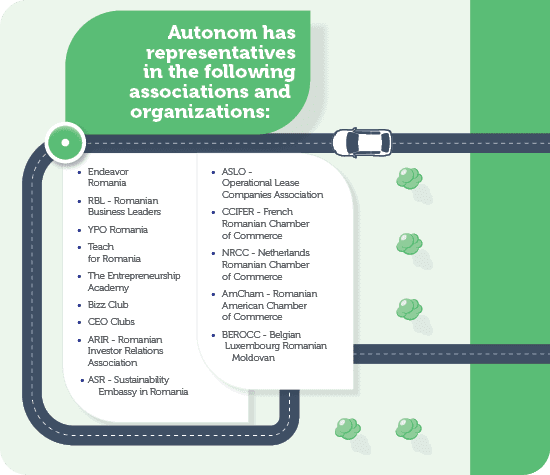Stakeholders, their needs and expectations
Stakeholders are defined as any group of people or any person who influences or is affected by the work of our organization or who can influence the values of our organization.
As stakeholders (internal and external) are part of the context in which our organization operates, key stakeholders and their interests in relation to the organization are identified and related obligations are determined.
These obligations are considered for the maintenance of the management system:
- Groups / individuals / organizations interacting with the organization;
- Groups / persons / organizations with authority over the organization;
- Groups / individuals / organizations that are influenced by the organization.
The scope of analysis and identification of our company’s stakeholders is extremely broad and varied, therefore stakeholder identification was done by segmenting according to relationship intensity:
- Central
area – ongoing relationships (employees, management, shareholders, etc.) - External
area – discontinuous relationships (on & off) (suppliers, customers, insurers, etc.) - Peripheral
area – occasional (contextual) relationships (universities, professional associations, NGOs, etc.)
The stakeholder analysis was conducted in the second quarter of 2021 as part of the materiality process to identify material issues relevant to our company and the Sustainability Strategy development process. We have identified risks and opportunities arising from the value chain analysis as well as the analysis of stakeholder needs and expectations. These have been taken into account in the development of the Sustainability Strategy and will be monitored annually.
We have defined a process for engaging and managing stakeholder relationships. Taking into account the specific stakeholder needs identified through stakeholder-needs mapping, with those groups with medium and high influence on the organization, Autonom develops specific engagement activities, transparently creating medium and long-term partnerships to understand mutual needs and expectations.
Main groups of stakeholders | Type of stakeholder (Internal/External) | Interest level in organization (Low, Medium, High) | Power/Influence level (Low, Medium, High) | Type of interaction desired |
|---|---|---|---|---|
Agencies employees | Internal | High | High | Intensive dialogues, engagement process with specific actions |
Support functions | Internal | High | High | Intensive dialogues, engagement process with specific actions |
Management | Internal | High | High | Intensive dialogues, engagement process with specific actions |
Shareholders | Internal | High | High | Intensive dialogues, engagement process with specific actions |
Customers | External | High | High | Intensive dialogues, engagement process with specific actions |
Suppliers of direct materials | External | High | High | Intensive dialogues, engagement process with specific actions |
Suppliers of services | External | Medium | Medium | Information & communication & Satisfaction of their expectation |
Authorities/city halls | External | Medium | Low | Information |
Universities/Schools | External | Medium | High | Intensive dialogues, engagement process with specific actions |
Neighbors | External | Medium | Medium | Information & communication & Satisfaction of their expectation |
Press / media/bloggers-social media | External | Medium | High | Intensive dialogues, engagement process with specific actions |
Competitors | External | Medium | High | Intensive dialogues, engagement process with specific actions |
International/Local NGOs | External | High | High | Intensive dialogues, engagement process with specific actions |
Agencies building owners | External | Low | Low | Information |
Potential employees | External | Medium | Medium | Information & communication & Satisfaction of their expectation |
Investors/Analysts | External | High | High | Intensive dialogues, engagement process with specific actions |
Professional association | External | High | High | Intensive dialogues, engagement process with specific actions |
Partnerships and affiliations
For Autonom, responsibility towards society, customers, employees and business partners is of utmost importance and therefore we aim to make a major contribution to creating a sustainable business environment, together with our partners with whom we share similar values. Through membership of various organizations and associations, we have access to the associations’ expertise in national and international best practices, while maintaining close cooperative relationships with all major players in our field.

We also actively seek to make a significant contribution to raising awareness on sustainability issues, encouraging constructive discussions and exploring opportunities with our partners. We are convinced that the future belongs to those who adapt and innovate in this field and we want to be an example of best practice for early stage companies in defining and implementing their sustainability strategy.
In 2021, we participated in online and offline sustainability events and were present in the media as guest speakers at the Sustainability Embassy, the launch of “Business for the Future” program and at the GovNet ESG Reporting Conference. “Ecologic” magazine also published an interview with Autonom’s Sustainability Director.
